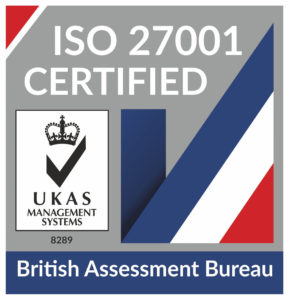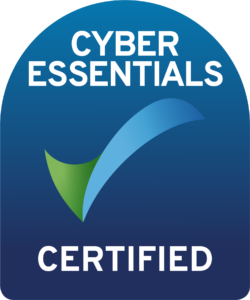
HaloCRM Guides
Lansweeper Integration
In this guide we will cover:
- What is the Lansweeper Integration?
- Pre-Requisites
- Enabling the Module
- SQL Details
- Key Fields
- Field Mappings
- Advanced Configuration
- Halo Integrator
What is the Lansweeper Integration?
On-premise Lansweeper instances can be integrated with Halo to import and manage assets.
Pre-Requisites
Your Lansweeper database must be in SQL Server Standard format to use this integration. If your Lansweeper database is a SQL Server Compact database, you will need to convert this into a Standard SQL database before continuing.
Enabling the Module
To enable the Lansweeper integration in Halo, go to Configuration > Integrations, and enable the module. Once the module has been enabled, click the menu icon for the module to begin configuring it.
As the Lansweeper integration is effectively an import from one SQL database to another, access to the Lansweeper database is required. This means there is no import facility within the web application itself, and instead, a separate tool called the Halo Integrator must be downloaded. More details will be given regarding the Halo Integrator later in this guide.
SQL Details
Both Lansweeper and Halo have a SQL database. This integration is an import from one SQL database into another, and the Halo Integrator will need details of how to connect to your Lansweeper database. Under the SQL Connection header in the Lansweeper module, there are five options that allow you to specify connection details for your SQL Server where the Lansweeper database is held, and also the query that should be run against the Lansweeper database for the import.
Fig 1. SQL connection.
The Halo Integrator will attempt to import any record that is returned via the SQL query. Later in the integration setup, you have the option to match fields from the Lansweeper database to Asset fields in Halo. You should ensure that any information you would like importing into Halo is selected in this SQL query.
By default, a SQL query has already been provided for you, and the majority of other configuration options have been already completed to work with this default query. This query can be adjusted if you have additional information that you would like to retrieve from Lansweeper, however, the default query will likely retrieve all of the information that you need.
Key Fields
Next you are given the option to choose some key fields for the import. These key fields have already been setup to work with the default query provided to you, and will not need adjusting unless you make changes to the query.
The first option available for you to specify is the name of the Unique Asset Identifier field from your query. This field will be used to match existing records to records that are being imported, so that you do not get duplicated Assets when the importer is run for a second time.
Fig 2. Key fields.
It is important that this field holds a unique value that does not change, otherwise duplicate Assets will be created during subsequent syncs, or the incorrect Asset may be updated.
The next key field is the name of the Asset Type field. The field you choose here should contain the name of the Asset Type of the Asset in Lansweeper. The value that is returned from the query for this field must match the name of an Asset Type in Halo. If a value is returned that does not equal the name of an Asset Type, then the Asset will fail to import.
Tip: If you do not wish to select an actual Asset Type field in your Lansweeper query, or you wish to import all Assets into the same Asset Type, you can hardcode a value in your query. For example, SELECT 'Lansweeper Assets' as [AssetTypename] FROM Table. In this example, AssetTypename would be your Asset Type key field. This would set the Asset Type of all Assets you import to Lansweeper Assets (if it exists).
The next key fields help identify the Site that the Asset belongs to, and the User of the Asset. In the same way that you have chosen an identifying field for Assets and Asset Types, you should now choose a field name from your Lansweeper query which will be used to identify the Halo Site by its name. There is also an additional option for you to choose a default Site, so if the fields value does not match to any Site names, then the Asset will be assigned to the default Site.
Fig 3. Site and user configuration.
Tip: To import all Assets into the same Site, add a hardcoded field to your SQL query. For example, SELECT 'Lansweeper Site' as [SiteName] FROM Table. In this example, SiteName will be your key field, and all Assets would be assigned to the Site 'Lansweeper Site' if it exists.
Similarly, choose a field name from your Lansweeper query that will return the details of the User that is associated with the Asset. This field should contain either the Username, Email Address, or Network Login of the User. You should then set the User Matching Field to one of these three values, depending on the data you expect to be returned. For example, if your User field returns the Username of an Asset's User, you should choose Username in the matching field. This is so that the User can be correctly identified in Halo and then assigned to the Asset. In the default query, the users Network Login is returned, and the default key field options reflect this.
Field Mappings
It is possible to map fields that are returned in your SQL query to Halo Asset fields. You must ensure that any field you wish to map is returned in your query. To add a new mapping, press the plus icon in the top right corner of the table.
Fig 4. Mappings popup.
First specify the name of the field in your Lansweeper query. Then you must choose which field you would like to map the Lansweeper field to in Halo. There are some system fields available, along with the option of *Asset Field*. If this option is chosen, when importing, a field will be created with a name equal to the Lansweeper query field name. If a field already exists with that field name, or after it has been created, the data from the Lansweeper field will be mapped into the Halo field.
Tip: You can also create mappings for the fields used in Key Fields if you wish. For example, you will be able to see the value of the Asset's unique ID field unless you also map it to another Halo field.
Advanced Configuration
There are two advanced options available for this integration.
Fig 5. Advanced options.
Firstly, you can assign an Asset to a User's Site if a User is matched during the import process using the key fields. This works as an override, so the User's Site will take precedence over all other Site matching.
Secondly, if you would like the import to only update pre-existing Assets, and not create any new records, then the second option should be enabled.
Halo Integrator
As previously mentioned in this guide, you need to download and configure the Halo Integrator to import data from Lansweeper, unless you are on v2.196+. Although the comprehensive setup of the Halo Integrator is not detailed in this guide, there are crucial steps you should take into account.
From v2.196+ you will have a choice of integrators that can be used to schedule this import, allowing you to choose between using the Halo integrator application (hosted by you) or the Halo DB integrator (hosted by you). The primary difference between these choices is how your password will be exposed. The Halo integrator application will access your Halo database, including obtaining your password, through the API, which means the password for the integration will need to be accessible via the API. Whereas the Halo DB integrator has the Halo API built into it and connects directly to your database. For more information on the Halo integrator application and the Halo DB integrator check out Halo DB integrator.
Your choice of integrator will impact how the password used for the integration is exposed, whether it is accessible via the API or not, but this will also be determined by your chosen password storage method.
Fig 2. Integrator selection
When the 'Halo Integrator' is selected you will still be able to use a Halo DB integrator to schedule imports in addition to this integrator. However, if you have selected 'Halo DB integrator', the Halo integrator will not be able to run for this integration.
Note: On premise customers will not be able to use the Halo Integrator.
Once you have chosen your integrator you will need to choose the method used for password storage in the 'Password Storage Method' field.
Fig 3. Password storage method
Halo- When this method is chosen your password will be stored by Halo, it will be accessible via Halo's API if the Halo Integrator is chosen as the integrator too. If using the Halo DB integrator your password will not be accessible via the API.
Azure Key Vault - When this method is chosen your password will be stored by Azure key Vault, it will not be accessible via Halo's API if the Halo Integrator is chosen as the integrator too. If you would like to use this method of storage you will need to configure a key vault in the Azure Key Vault integration. For information on setting up the Azure Key Vault integration, check out our guide: Azure Key Vault. Once you have configured a Key Vault in Halo you will be able to choose which Key Vault to store the password in.
Fig 4. Choose Key vault to store password in
Recommended:
If you are using the 'Halo integrator' to schedule imports we recommend using Azure Key Vault as the password storage method as this will ensure your password is not accessible via the API. If using the Halo DB integrator you can use Azure Key Vault to store passwords for increased security, however, even when Halo is used as the password storage method the password will not be accessible via the API.
If you have multiple Halo integrator applications you may wish to restrict which of these have access to this integration. By default all client IDs will be able to access on-premise integrations, however, this can be disabled, allowing you to whitelist which client IDs can access the integration.
To do this head to configuration > advanced settings > disable 'Allow all client IDs to access all on-premise integrations which use the Halo Integrator'.
Fig 5. Allow all client IDs to access all on-premise integrations which use the Halo Integrator
Now, on the integration setup page in Halo, you will have an option to add in the client IDs you would like to whitelist for this integration.
Fig 6. Allowed client IDs for integration
Here, enter the client IDs for the applications set up to authorise the connection between your Halo instance and your Halo Integrator. Only the integrators authorised using these client IDs will be able to access this integration.
Popular Guides
- Asset Import - CSV/XLS/Spreadsheet Method
- Call Management
- Creating Agents and Editing Agent Details
- Creating API Applications
- Departments and Teams
- Halo Integrator
- Importing Data
- Multiple New Portals with different branding for one customer [Hosted]
- NHServer Deprecation User Guide
- Organisation Basics
- Organising Teams of Agents
- Step-by-Step Configuration Walk Through



